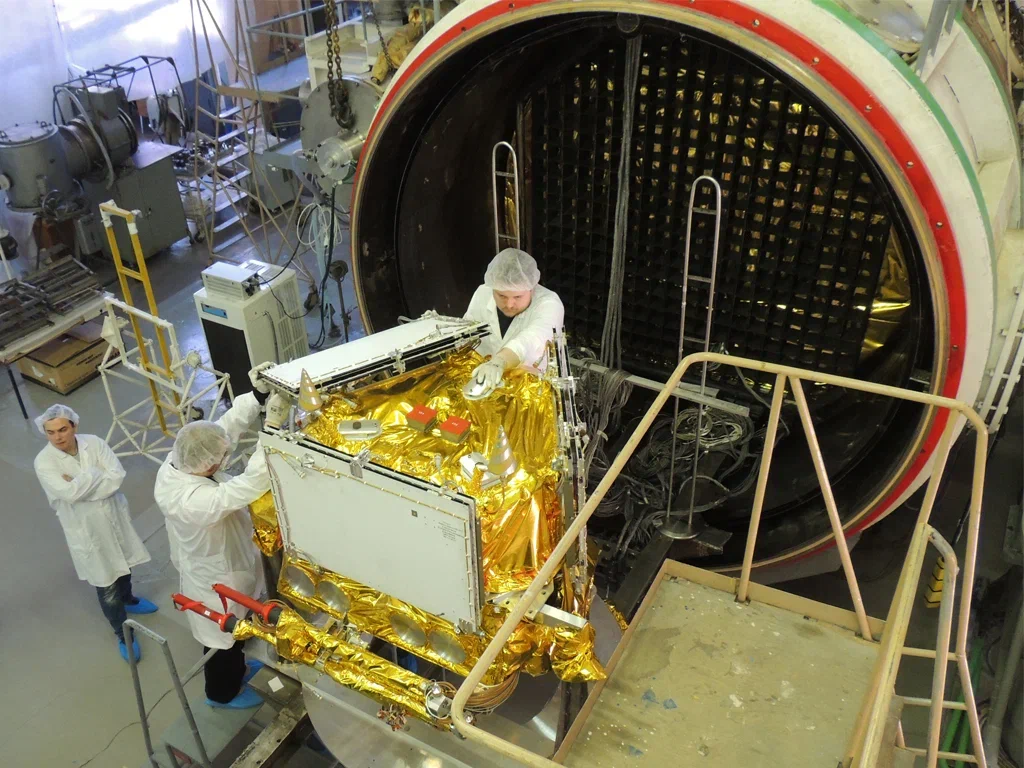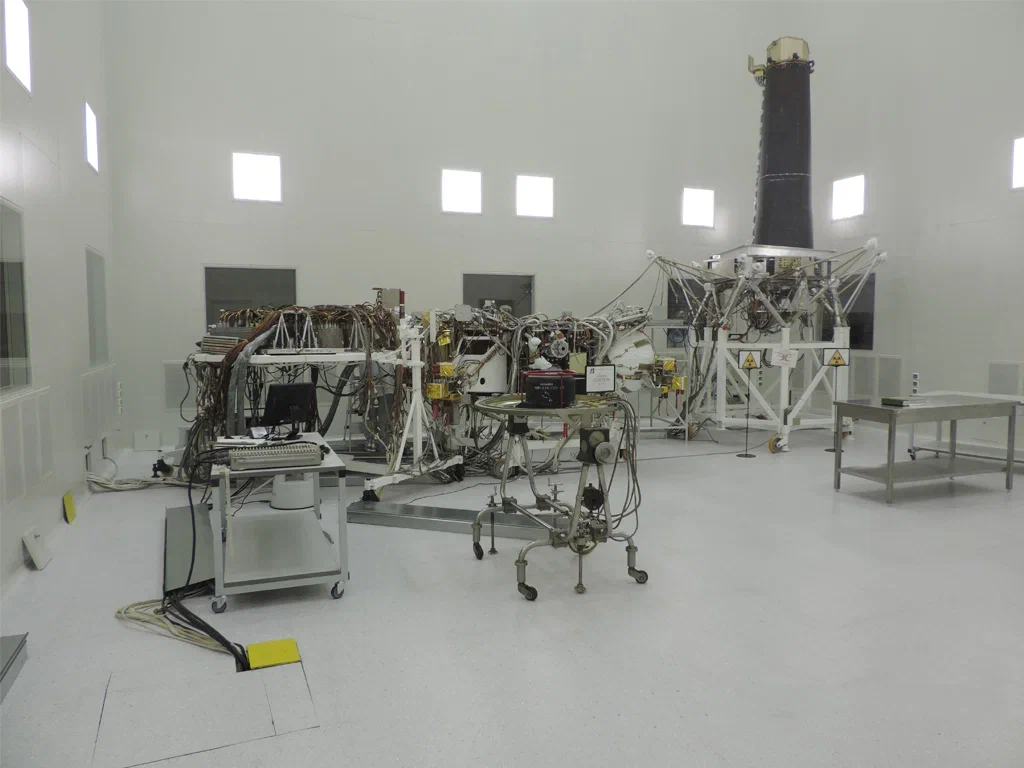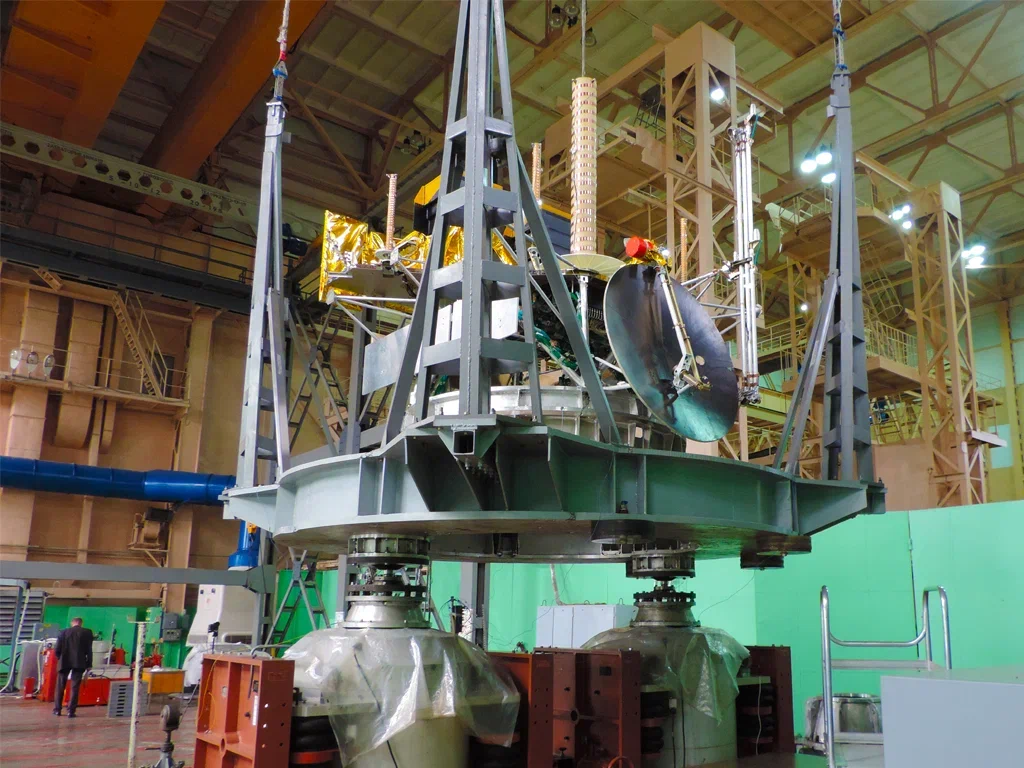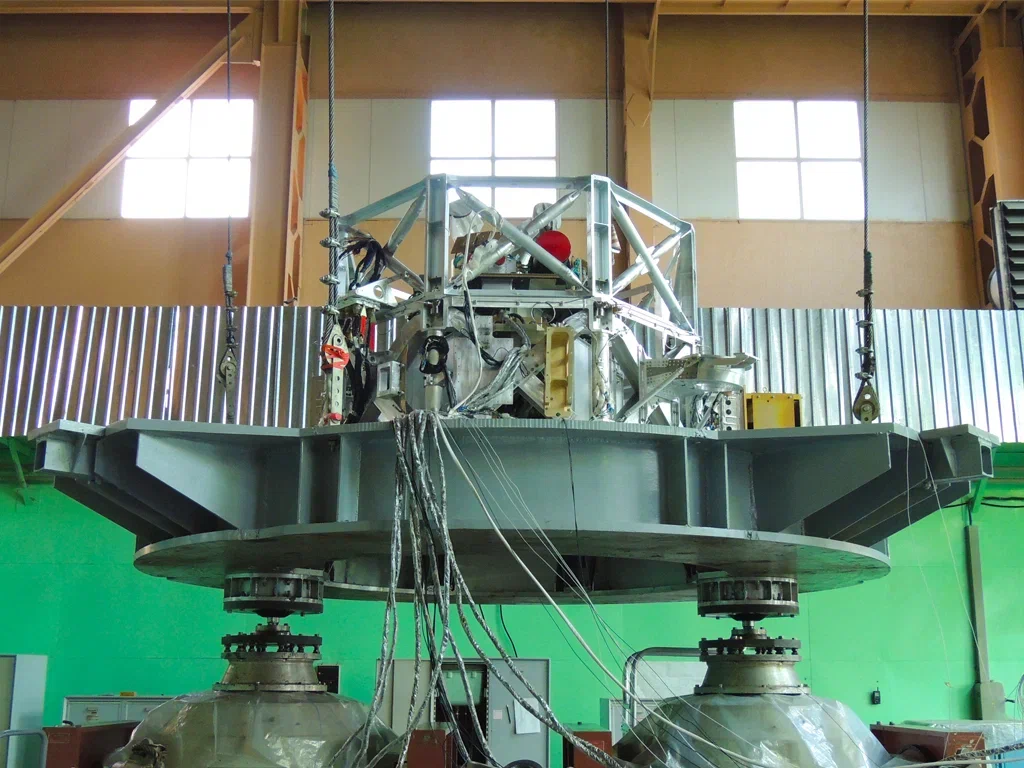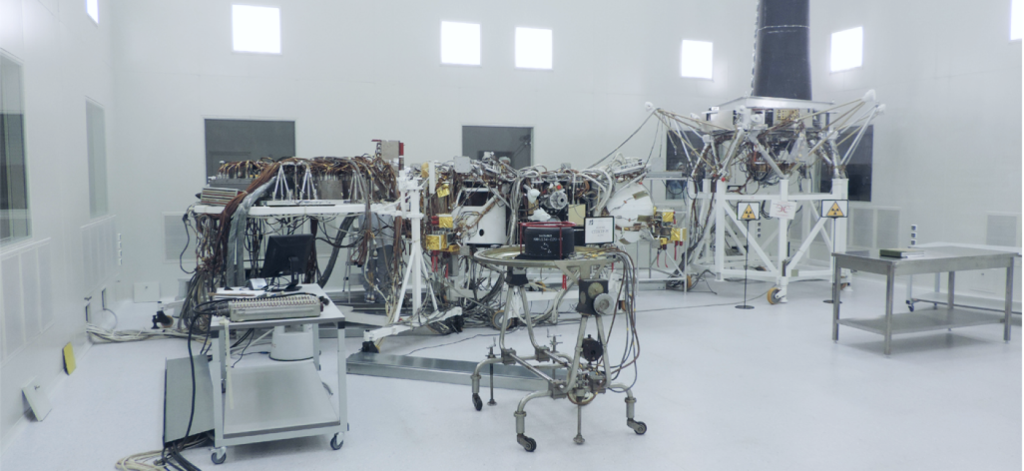Trials
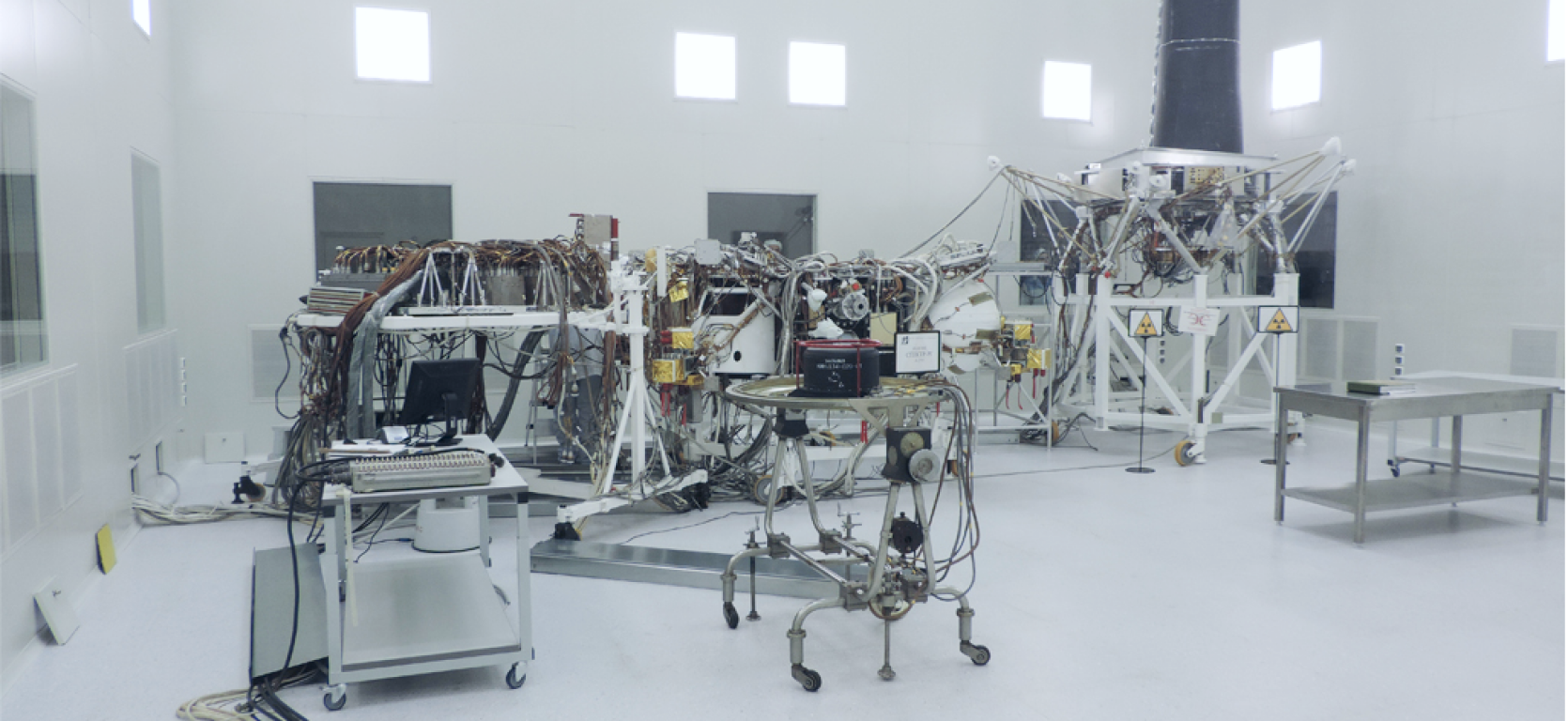
Main tasks
-
Ground test complex test includes
- pneumohydraulic tests;
- strength and kinematic tests;
- electrical tests; antenna tests;
- automation of ground tests and bench telemetry;
- laboratory of structural dynamics and damping devices;
- test preparation group.
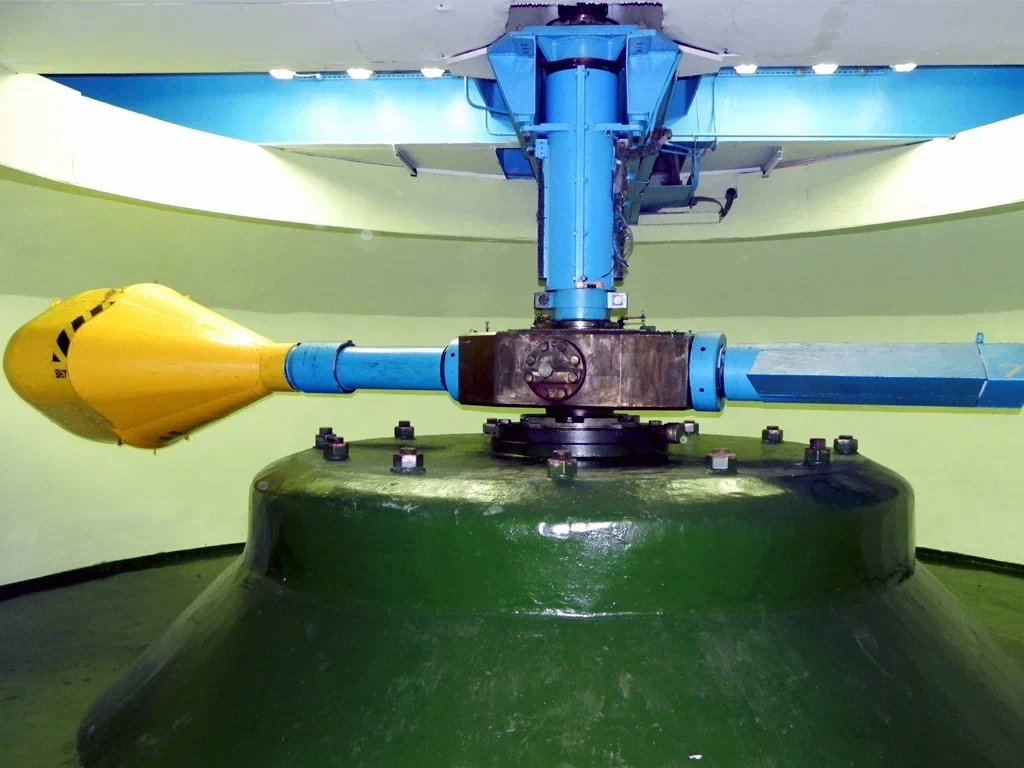
Over the past few years, Lavochkin Association, JSC switched to SC ground tests of next generation SC, where the instruments and devices are situated not in a sealed container as before but are mounted on multilayer honeycomb panels and are operating in open space conditions.
Thus, many low-frequency structural elements were used in the design of in the structure of Navigator service module and on the Electro product, which led to the increase of vibration load mode test requirements. It became necessary to test power structure according to the test procedure and not to allow these elements to break. To solve this task multichannel system of data collection and handling while controlling two-bench vibration test facility.
The benches at Lavochkin Association, JSC are used also to test the launch and LV stages separation, vibration resistance testing during injection stages and operation of the propulsion system in space, there are also special benches for testing the functioning of mechanical systems, to test SC for the case of entry into dense atmospheres of planets or the Earth, equipment for testing landing under different external conditions (atmospheric, gravity, temperature, etc.) and other special test benches.
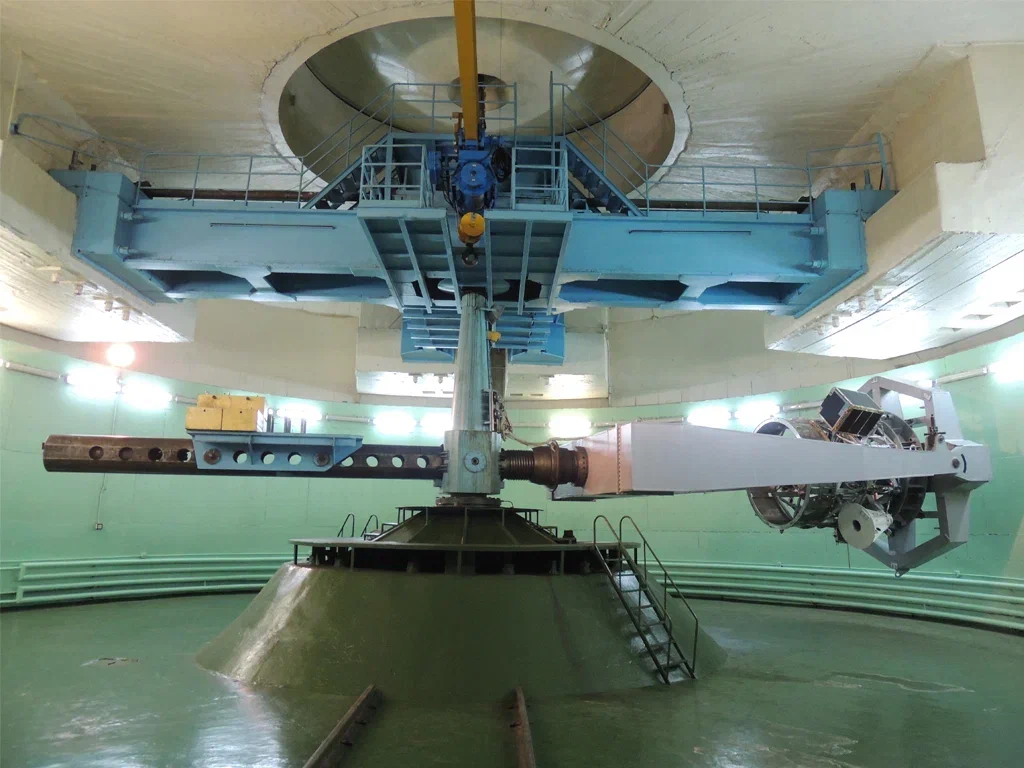
Gained experience of centrifuge operation revealed a number of additional possibilities of these benches. In addition to tests for large linear overloads, it proved rational to use them in the following cases:
- testing of sealed reservoirs (tanks and instrumental bays) and systems inside;
- testing of structures with a big quantity of elements, especially while spatial loading (instrument frames with equipment units);
- functional test (equipment, separation systems, pressurization system, thermal control system units, PAS etc.)
- testing large-scale, non-power structures (antenna type, SA panels, telescopes etc.); testing for combined loads (statics and dynamics).
The first powerful centrifuge was launched at the enterprise in 1967; the first Venus spacecraft were tested on it both in static and with entry dynamic simulation (“with shaking”).
The main characteristics of the system: nG = 400 t; engine power 400 kW; bin diameter ~9 m. For the following more massive stations a more powerful centrifuge was built and was put into operation in 1982, which is unique in its kind and having the following characteristics nG =1000 t; engine power 1260 kW (nominal), bin diameter ~19 m. A special device of car type allows to simulate a linear overload up to 300 g, low-frequency dynamic and surface loading of the outer heat shell.
Currently the available test bench allows to perform all necessary types of tests for SC. The peculiarity of our test bench consists in simulating not only external mechanical loads but also specific “not ground” operating conditions of manufactured SC. According to the peculiarities of our spacecraft, there is a range of dynamic and kinematic benches that allow with minimal rework to consider the peculiarities of ground testing of new subjects. At SC testing Lavochkin Association, JSC use a test bench with thermal vacuum chambers to create specific conditions of an outer space such as vacuum, solar emission, “cold” of an outer space, planet surface and atmospheric exposure.
